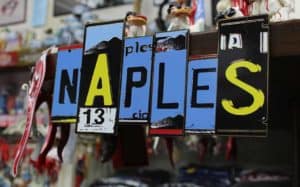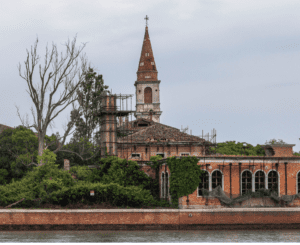The Spice Routes101: Discover the Trade Origins of Global Cuisine

Updated On: April 22, 2024 by Fatma Mohamed
The intertwining of the spice routes, trade and the history of global exploration is a story of human endeavour, ambition, and the continuous quest for culinary and medicinal excellence. Our combined taste for exotic spices like nutmeg, cinnamon, and cloves not only flavoured our food but also shaped the very fabric of society, driving explorers to venture into the unknown. The magnetic pull of these spices led to the mapping of new sea routes, significant geopolitical shifts, and the fusion of cultures.

The quest for these coveted spices contributed to the establishment of trade routes that crisscrossed continents and oceans, commonly referred to as Spice Routes. These routes linked the East and West, enabling not just the exchange of commodities but also the transfer of knowledge, technology, and culture. Trade on these routes was so significant that it had a robust impact on the economies of the world, compelling nations to seek direct access to the spice-producing regions. The legacy of the spice trade can still be felt today, not only in our kitchens but also in our economic and cultural practices.
Table of Contents
Historical Significance of the Spice Trade
The spice trade significantly shaped the interactions between ancient civilisations and contributed to the formation of trade networks and the global economy.
Early Trade in the Ancient World
Spices from Asia, particularly from regions like India and China, were highly prized in the ancient world for their culinary and medicinal properties. These valuable commodities were traded along extensive networks that reached the markets of the Roman Empire and beyond. Rome’s appetite for luxuries such as pepper, cardamom, and cinnamon drove the trade, with merchants traversing the perilous routes through the Middle East.
The Height of the Spice Trade

The demand for spices in Europe peaked during the Middle Ages. It was during this time that the Byzantine and Ottoman Empires played central roles in spice trade control, acting as gatekeepers between Asia and Europe. Venice emerged as a potent maritime power, establishing a monopoly over the spice trade and reaping enormous profits that fuelled the economy of the entire region.
The Fall of Spice Dominance
The fall of Venice’s trade dominance came with the Age of Exploration, as European explorers sought direct sea routes to the spice-rich islands of Indonesia. This diminished the Middle Eastern intermediaries’ hold on the trade. The Portuguese, followed by the Dutch and the English, established their own networks, marginalising the ancient overland routes and altering the balance of power and trade globally. The competition to control the spice trade redefined geopolitical boundaries and was a precursor to European imperialism.
Throughout history, the spice trade has been more than just the exchange of exotic flavours; it has been a catalyst for exploration, cultural exchange, and economic development.
Cultural Impact of Spices

The diverse and profound influence that spices have had on global cultures cannot be overemphasised. From invigorating flavours that define national dishes to the aromatic ingredients that mark social customs, spices have been at the heart of cultural evolution.
Spices in Cuisine

We discover an array of spices embedded in recipes from all corners of the world, each contributing a unique flavour or aroma to the culinary landscape. Take cinnamon, for instance, a spice cherished for its warm and sweet notes, integral to both savoury and sweet dishes alike. Clove and nutmeg offer depth and complexity to meals, ranging from Indonesian rendang to Caribbean jerk chicken.
In India, turmeric is not only prized for its bold colour but also its earthy bitterness that elevates numerous curries and rice dishes. Ginger and saffron stand out for their pungent and subtle flavours, respectfully, making appearances in hearty stews and delicate pastries. These ingredients aren’t just additives; they’ve shaped entire culinary philosophies and traditions that resonate worldwide.
Spices and Social Custom
Beyond the kitchen, spices have woven themselves into the very fabric of social customs. Anise, for example, is a spice that cannot be missed in ceremonial bread in the Mediterranean, signifying moments of celebration and reflection within communities. Saffron’s bright hue has coloured countless festivals across Asia, embodying purity, wealth, and joy in strands.
Our encounters with spices go beyond the senses; they mark rites of passage, religious observances, and festivities, reinforcing our cultural identities. Spices have acted as symbols of hospitality across cultures, with the sharing of a spiced dish or a drink reflecting mutual respect and friendship. Spices, indeed, have become as much about the ingredients themselves as they are about the people who’ve grown, traded, and shared these treasures through the ages.
The Spice Routes: Economics of the Spice Trade
In the age of exploration, the economics of the spice trade transformed global commerce, establishing complex trade dynamics and leading to monopolies that controlled entire economies. The lure of profits drove European powers, with the Portuguese and Dutch leading, to establish trade routes that would shape geopolitics for centuries.
Trade Dynamics and Pricing

The pricing of spices was driven by rarity, demand, and the cost of transportation. Merchants marked up prices significantly by the time these goods reached European markets. Pepper, nutmeg, cloves, and cinnamon were more valuable than gold in weight, and Venice initially capitalised on this by being the conduit through which spices entered Europe. As new routes were established by sea, bypassing the Silk Road, the economics shifted, with the Portuguese finding a direct sea route around the Cape of Good Hope to Asia, upending the Venetian monopoly.
Control and Monopolies
Control over the spice trade became the linchpin of power, leading to the rise of monopolistic entities such as the Dutch East India Company (VOC). The Dutch and the British East India companies used military force and strategic alliances to dominate trade from the 17th to 19th centuries. These entities could dictate terms of trade, control prices and exert influence over entire regions in Asia. Their power was such that they effectively acted as sovereign powers in regions under their control, with the spice trade underpinning their economic might and geopolitical influence.
Navigational Routes and Spice Trade

In our exploration of the spice trade, we focus on the two primary methods of transportation that connected diverse cultures through commerce: over land and by sea. Each played a crucial role in the distribution of spices, shaping culinary traditions and cultural exchanges across the globe.
Land Routes
The Silk Road, an intricate network of trade paths traversing Asia, stands as the most renowned of ancient land routes. It originated in China, meandered through the rugged terrains of Central Asia, and reached as far as the Middle East and the Mediterranean Sea. Merchants and travellers transported numerous goods, including coveted spices, on camelback and on foot, overcoming formidable natural obstacles.

The Incense Route, a series of land and sea trade pathways, held particular significance for the transport of frankincense and myrrh from the regions around the Red Sea to the Mediterranean. This route was pivotal, not only for trade but also for the cultural interactions it facilitated between the civilisations along its path.
Maritime Routes
In contrast to overland expeditions, the maritime routes offered access to a broader range of spices and trade goods via navigable waterways. Ancient mariners from the Middle East expertly navigated the Red Sea, extending their reach to the East African coast. The establishment of the monsoon system enabled traders to sail across the Indian Ocean, securing direct access to the Spice Islands and India.

These sea routes formed an integral part of the spice trade route, allowing spices like pepper, nutmeg, and cloves to travel from the Far East to eager markets in Europe and the Mediterranean basin. The control of these maritime channels was highly contested due to their economic importance, leading to a clash of empires and the rise of colonial powers.
Through both land and sea routes, the spice trade connected civilisations and fuelled a global interchange of not just goods but also ideas, languages, and cultures, profoundly influencing the world’s palette.
Major Spice Producing Regions

The trade routes that crisscrossed the ancient world were heavily influenced by the demand for aromatic spices. Two key areas emerged as pivotal in the supply of these treasured commodities, each with its own array of spices that flavoured cuisines and fuelled commerce.
Indonesia and the Maluku Islands
Indonesia, historically referred to as the Spice Islands, was the world’s primary source of valuable spices like nutmeg, mace, and cloves. Specifically, the Maluku Islands, a small archipelago in Indonesia, played a significant role in the spice trade. These islands were once the only source of cloves and nutmeg, which were highly sought-after in Europe and Asia for their culinary and preservative qualities.
The Indian Subcontinent
India’s contribution to the spice trade cannot be overstated, with the Malabar Coast being a prominent region for the production of black pepper, known as “black gold”. This coastline was the centre of a spice trade network that extended to Europe and the Middle East. Furthermore, Sri Lanka, off the southern coast of India, was famed for its cinnamon production, another spice that held great value in ancient trade.
Our knowledge of these regions and the spices they produced reflects their indelible influence on world trade and cuisine. Each region’s unique climate and terrain offered the perfect conditions for cultivating their distinct spices, which continue to be integral to dishes around the globe.
Influence of Explorers and Conquerors

Within the tapestry of global trade and its evolution, the roles of explorers and conquerors stand prominently. Grit and audacity characterised their voyages, which led not only to the discovery of new worlds but also to the reshaping of commerce and cultural exchanges.
Pioneering Explorers
The Age of Exploration opened gateways to worlds unknown, with intrepid navigators setting sail in pursuit of new horizons. Christopher Columbus, sponsored by Spain, embarked on an endeavour to find a westward route to Asia but instead stumbled upon the Americas. His voyages sparked an era of transatlantic exploration that would forever shift the world’s dynamics. In parallel, Vasco da Gama, a commander from Portugal, successfully navigated around Africa’s Cape of Good Hope to reach the Indian subcontinent, establishing the first direct sea link between Europe and Asia.
Further voyages by explorers such as Ferdinand Magellan, who organised the Spanish expedition to the East via the Pacific, resulted in the first circumnavigation of the Earth. Such expeditions were not without perils, often marked by battles, harsh conditions, and encounters with indigenous peoples. Meanwhile, figures like Marco Polo travelled overland to Asia and recorded their experiences, inspiring future generations to seek the riches and wonders of these distant lands.
Colonial Powers and Their Impact
The drive for wealth and influence spurred European nations like Portugal and Spain to not only explore but also establish colonies. Through both exploration and colonisation, they expanded their power, creating vast empires and altering global trade through control of new territories and waterways.
Spain and Portugal divided the newfound territories under the Treaty of Tordesillas, drawing a line on the map that delineated their respective spheres of influence. Age of Discovery expeditions led to the extraction of precious metals from the Americas, which fuelled European economies and long-term colonization efforts. Conversely, the indigenous populations encountered suffered tremendously due to wars, slavery, and diseases brought by the Europeans.
The involvement of these countries in global exploration and colonial dominion not only redefined geopolitical boundaries but also the culinary palettes of cultures worldwide, as they introduced a variety of new spices and ingredients to different continents. The profound influence these nations and their voyagers had on world history is still evident in the multicultural societies and blended cuisines we cherish today.
Commodities Traded Alongside Spices

While the spice trade is often celebrated for its aromatic contributions to culinary traditions worldwide, it is essential to note the variety of other goods that were traded along with spices. These commodities not only enriched the global economy but also added cultural and material value across continents.
Textiles and Luxuries
In the rich tapestry of trade, textiles were highly prized for their intricate designs and the complexity of their manufacture. Splendid silks from China, often used to make robes and hangings, were sought after in various parts of the world for their lustrous beauty and high quality. Alongside the revered silks, luxuries such as incense and perfumes added intangible allure to the cargo, with scents like ambergris and sandalwood being transported to satisfy the olfactory pursuits of the wealthy classes.
Precious Metals and Stones
Equally significant were the exchanges of precious metals and gemstones that often accompanied spice cargoes. Shimmering gold, extracted from the mines of Africa and South America, found its way into the markets of Europe and Asia. At the same time, gemstones such as diamonds and rubies, intricately cut and polished, added a touch of opulence, symbolising wealth and power for their possessors. These precious items were not merely ornamental but served as high-value currency in the complex economic networks of the time.
Transition to Modern Spice Trade

In this section, we’ll explore the key developments that have shaped the modern spice trade, focusing on technological advancements and the effects of globalisation on trade expansion.
Technological Advancements
Technological progress has played a pivotal role in advancing the spice trade. With the advent of new trade routes, spices that were once exclusive to distant lands are now accessible globally. The New World’s contribution to the spice catalogue, including vanilla and allspice, has reshaped culinary preferences across the globe. Refrigeration and improved transportation methods, such as container shipping, have greatly extended the shelf life and reduced the cost of spice transport. Moreover, the Internet has connected small-scale producers directly with global markets, democratising access and diversifying the range of spices available to consumers.
Globalization and Trade Expansion

The forces of globalisation have led to significant trade expansion, making spices more widely available than ever before. International agreements and the establishment of the World Trade Organization have decreased trade barriers, leading to an increase in spice volumes moving between countries. Such integration of markets has introduced diverse flavours to new regions, thereby evolving local dishes and culinary techniques. Simultaneously, this global trade network supports economies in the spice trade, with many countries depending on it as a significant source of income. Our current spice acquisition is a testament to a complex web of global relationships and economic systems, operating seamlessly to deliver flavours to our doorsteps.
Spices and Health

Spices have been intertwined with health and medicinal uses for centuries. They are not only pivotal in culinary arts, but also have a significant impact on healthcare and treatments, owing to their therapeutic properties.
Medicinal Uses
Historically, spices such as cinnamon, ginger, and turmeric played central roles in traditional medicine. Cinnamon was highly valued for its antimicrobial and anti-inflammatory properties. It was, and in many places still is, commonly used to aid digestion and to help manage blood sugar levels.
- Ginger has long been used to alleviate gastrointestinal distress. It’s known for its efficacy in reducing nausea and aiding digestion.
- Turmeric, with its active compound curcumin, is renowned for its anti-inflammatory and antioxidant benefits, making it helpful in managing conditions such as arthritis and metabolic syndrome.
Here is a summary of some of their specific uses:
| Spice | Reported Medicinal Benefits |
|---|---|
| Cinnamon | Anti-inflammatory may improve symptoms of arthritis |
| Ginger | It can alleviate nausea, aid digestion |
| Turmeric | Anti-inflammatory, may improve symptoms of arthritis |
Spices in Modern Healthcare

In contemporary healthcare, these spices continue to be of interest. Clinical research is beginning to support some of the medicinal claims that have surrounded these spices for years. For instance, studies suggest that cinnamon can play a role in managing type 2 diabetes, while both ginger and turmeric are being examined for their potential to combat inflammatory conditions and certain cancers.
We can observe how health and wellness trends are increasingly incorporating spices into dietary supplements and natural therapies:
- Cinnamon is used in various forms, from essential oils to capsules, to support metabolic and digestive health.
- Supplement forms of ginger are popular for anti-inflammatory and gastrointestinal care.
- Turmeric supplements, often enhanced with black pepper for better absorption, are widely consumed to support joint and overall health.
It’s essential to acknowledge that while these spices have a long history of use in traditional medicine, their efficacy in modern healthcare is still an ongoing subject of research, and their use should complement, not replace, conventional medical advice and treatment.
Future of the Spice Trade

As we look towards the future, the spice trade stands on the precipice of transformation. With an increased focus on sustainable practices and shifting consumer preferences, we are witnessing an evolution that could redefine global spice trade networks and consumption patterns.
Sustainable Agriculture
Sustainability has become a non-negotiable factor in the agriculture of spices. We’re moving beyond traditional farming to incorporate practices that ensure the longevity and health of the soil and ecosystems. This includes rainwater harvesting, crop rotation, and the use of organic fertilisers. Producers are adopting Fair Trade certifications, ensuring that sustainable growing practices are economically feasible and beneficial for all stakeholders. Global trade dynamics are gradually shifting towards a model that values environmental stewardship just as much as profitability.
Evolution of Consumer Preferences
Today’s consumers are more enlightened and selective, demanding transparency about the origin and production of the spices they purchase. There’s an escalating trend for ethically sourced and artisanal spices. As a result, we see a burgeoning market for spices labelled with Protected Designation of Origin (PDO), akin to fine wines, where the terroir imparts unique flavours and characteristics. Seasonings typically found in regional cuisines are now globally sought after, inspiring a fusion of culinary traditions and amplifying the demand for previously obscure spices.
Frequently Asked Questions
We’ve compiled a list of the most common inquiries regarding the historical spice routes and their impact on the world.
What were the principal spices traded along the historic routes?
The most sought-after spices included pepper, cinnamon, clove, nutmeg, and mace, each of them being a catalyst for the global spice trade.
Which nations dominated the spice trade during its peak?
Portugal and Spain initially dominated the spice trade in the 15th and 16th centuries. The Dutch and the British later became leading powers in spice trading as they developed their own East India Companies.
What influence did the spice trade have on global cuisine?
The introduction of spices to Europe revolutionised food preparation, leading to the rich and varied culinary traditions that shaped the ancient world and continue to influence global cuisine today.
How did the spice trade affect the socio-economic structures of the period?
The spice trade created immense wealth and power dynamics, enabling the rise of merchant classes and transforming the economic structures of the societies that participated in it.
What was the duration of the spice trade’s prominence in global commerce?
The spice trade was a significant element of global commerce from antiquity until around the 19th century, when the commercial cultivation of spices became more widespread, reducing their exotic allure and value.
How did the demand for spices contribute to the age of exploration?
The demand for a direct spice trade route was a major driving force behind the Age of Exploration, as Europeans sought new paths to the East, leading to the discovery of new lands and sea routes. This pursuit laid the foundations of modern global trade networks.






